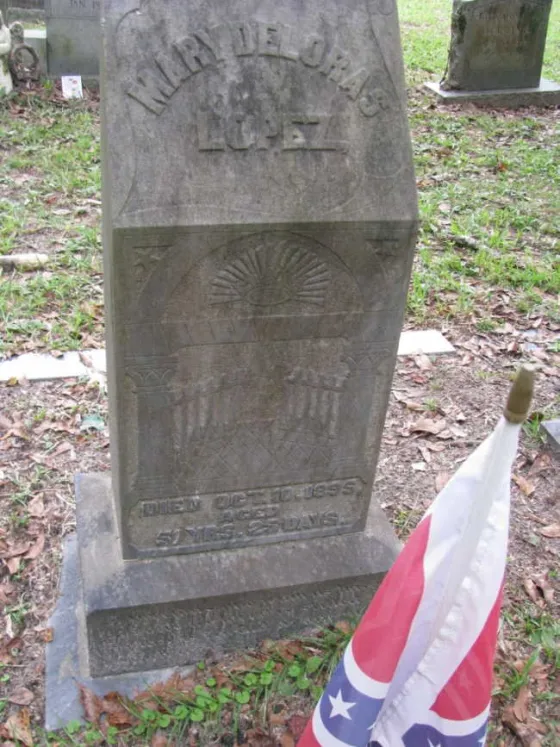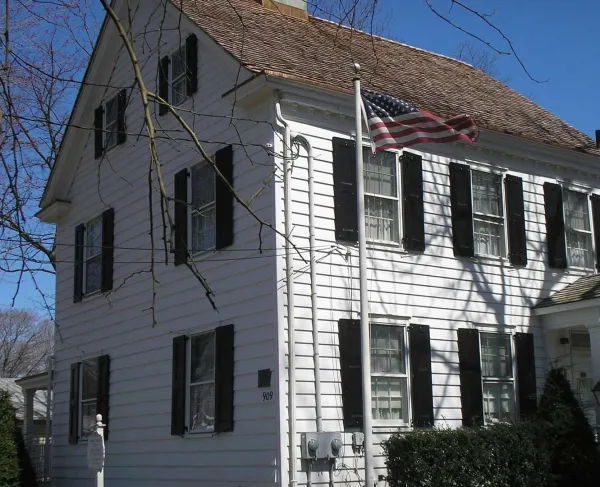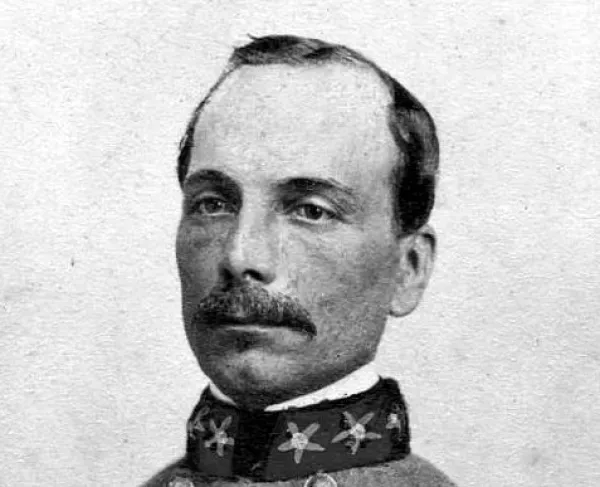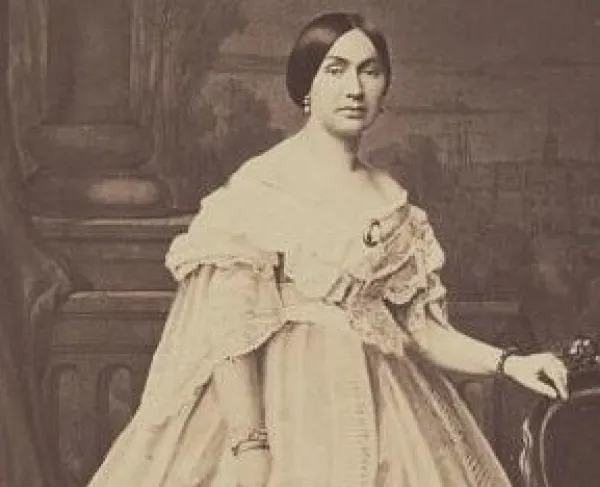Lola Sánchez
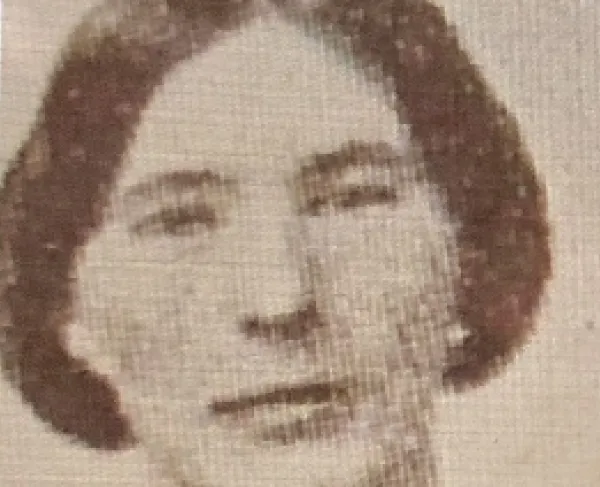
Maria Dolores “Lola” Sánchez was one of the most unsuspecting Confederate spies of the Civil War. Born in the 1844, she was from one of Florida's oldest and most prosperous Spanish families, one of two that have continuously resided in Florida since the First Spanish Period. Lola's great-grandfather Jose de Sánchez Ortigosa, Jr. was born in St. Augustine in 1724 and was among those who fled to Cuba in 1764 when Florida was ceded to Great Britain following the Seven Years' War. He returned to Florida following the British departure after the American Revolution and appears in the 1793 Spanish census. Her father Mauricio was born in St. Augustine in 1799.
Don Mauricio Sánchez established a large cattle farm about 20 miles southwest of St. Augustine in close proximity to the east bank of St. John's River opposite the town of Palatka. The fact that as a young man Mauricio was granted the title "Don" by Spanish King Ferdinand VII was indicative of his wealth and social standing.
When the Civil War broke out support for secession was strong amongst the St. Augustine area's many families of Spanish descent.
Her older brother Manuel Roman Sánchez, however, served in the “St. Augustine Rifles” which later became Company H, 2nd Florida Infantry. He was wounded and captured at Gettysburg in the Florida Brigade’s July 2 assault on Cemetery Ridge. Manuel was imprisoned at Camp Lookout and paroled at the end of the war.
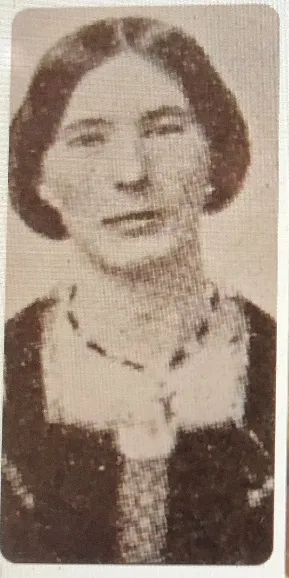
On March 11, 1862 Union warships appeared in the St. Augustine harbor and the city surrendered without a fight. It remained occupied until the end of the war. Martial law was imposed.
The Federals utilized St. Augustine as a base of operations to launch raids into the surrounding countryside where Lola's family lived. They established outposts along the east bank of the St. Johns River and patrolled the surrounding area. The Federals also took possession of the Castillo de San Marcos, the old Spanish fort built in the late 1600s to defend against pirates, the British and Americans. It was renamed Fort Marion when control of Florida passed to the United States in 1821. Utilized as a military prison during the American Revolution, six signers of the Declaration of Independence were held there as was Chief Osceola during the Second Seminole War.
Confederate forces, however, still controlled the St. Johns River. Under the command of Captain John James Dickison, known as the "Swamp Fox of the Confederacy", the territory he controlled on the west bank was commonly referred to as "Dixieland". Dickison's force, designated Company H, 2nd Florida Cavalry, was comprised of 75 men. Although outnumbered, the unit was efficient and effective, launching surprise attacks up and down the river.
Dickison relied heavily on intelligence supplied to him by citizens in the Union controlled area on the St. Johns. Suspicion fell upon Lola's father, Mauricio, who was highly respected by the area's residents. He was arrested in early 1864 and imprisoned in Fort Marion. Lola and her sisters Panchita and Eugenia claimed he was falsely accused, a claim likely true.
The Sánchez family, though, went out of its way to ingratiate themselves with the Union troops, often providing home-cooked meals. Despite these efforts, the family's pleas to free Mauricio fell on deaf ears and motivated the sisters to plot revenge.
Having built relationships with the Union soldiers, Lola and her sisters chose to double-down on gaining favor with them. Taking advantage of their close proximity, they increased their entertainment of and meals to Union officers at their homestead. As the officers dined, the Sánchez sisters eavesdropped on their conversations in order to obtain valuable information that could be passed along to Dickison.
Lola's hospitality-based tactics prevailed on May 21, 1864, as she learned the Federals were planning an attack on the Confederate forces. Union commanders feared Dickison might launch a raid to sever their supply lines and decided on a pre-emptive strike on his camp at Palatka. They planned to bring gunboats up the St. Johns River and provide artillery support.
Lola determined to warn Dickison of the impending attack. While Panchita and Eugenia distracted their guests with music and food, she slipped out of the house, rode to the river and crossed by boat. On the opposite shore she found a Confederate picket post. Although legend speculates she sent to Dickison in person, in all likelihood her intelligence was delivered by courier. Dickison was three miles away from the St. Johns and only be venturing across the river and back, Lola was able to complete her mission and return home without the Union officers detecting her absence.
Lola's efforts altered the course of the next two days. On May 22, Dickison repositioned his forces outside Palatka and spent the morning reconnoitering for artillery positions. Later that day, the Confederates spotted the Union fleet. While the rest of the ships docket, the USS Columbine continued upstream.
Keeping his men hidden, Dickison waited until after dark to fire upon the Federal forces and ships along the riverfront at Palatka. His artillery fired 28 rounds and damaged several vessels. Before the Federals could respond, Dickison slipped away and moved to a wooded area south on the St. Johns where the river made a sharp bend, Horse Landing. Here he waited for the Columbine.
On May 23, Dickison waited all morning and into the afternoon before the Columbine appeared. When it reached Horse Landing the Confederate artillery opened fire, striking the ship's rudder and shattering the steam stack. Without the ability to steer, the ship ran aground and Dickison unleashed several volleys. Half the crew eventually fell wounded before surrendering. The Confederates then burned the ship. The Battle of Horse Landing was a resounding victory and one of only a few instances when a Union warship was captured and destroyed by land forces.
After the Civil War Lola married a Confederate veteran, Corporal Emanuel Lopez, who served in the 3rd Florida Infantry and bore eleven children. Her sisters also married former Confederate soldiers. Panchita wed Captain John R. Miot of the 6th South Carolina Cavalry. Eugenia later married Private Alberto Rogero. Rogero served in the 2nd Florida Cavalry and fought at Horse Landing. Lola died in 1895 and is buried in St. Ambrose Cemetery in Elkton, Florida.
